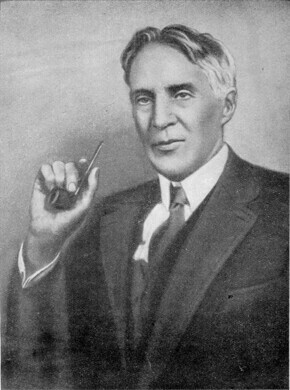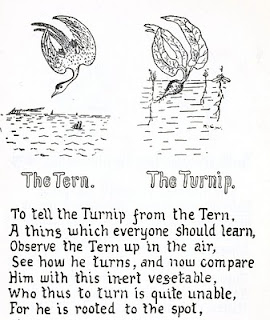 |
| Robert William Wood |
Some years ago, I had been to the Brahmagiris in Coorg. The rolling sholas are spectacular and it has a way of bursting into view with special effect that is enhanced by the climb that one has to make. Anyway in the weeks after my return returned, I developed an itch on my back with eruptions on the skin that kept made me miserable for almost two months. The dermatologist I went to tried out antifungals, antibacterials and when the right remedy was found it quickly subsided but it did raise doubts about the quality of medical diagnostics. When I mentioned this to my birding physician friend Dr. NS Prashanth, he mentioned that it should have been quite easy to identify a fungal infection using a Wood's lamp, something that every doctor would apparently have in their kit. A Wood's lamp essentially produces ultraviolet light and some fungi glow in UV. The process is termed fluorescence - the fungi convert light in the UV range into light in the visible wavelengths - and should not be confused with bioluminescence which is also seen in some fungi. Wood's lamp is just like our everyday "tubelight" (technically a fluorescent tube - a glass tube internally lined with a fluorescent chemical) but made of a special glass called Wood's glass. Wood's glass is made of Barium silicate with nickel oxide - which makes it very opaque to visible light but letting UV through.
Looking up, thanks to Wikipedia for showing the connectedness of things , I found that this Wood was Robert William Wood (May 2, 1868 – August 11, 1955), a physicist who had a keen interest in UV and IR photography. He also apparently was debunker of frauds and when the journal Nature sent him to investigate something called N-rays he did the little trick of removing a vital prism in the experiment and the discoverer of the rays was still able to produce unaltered results demonstrating plainly that the setup was fake. Wood liked to amuse people and one trick was to carefully toss sodium into a pond and act as if he was spitting to shock onlookers with explosive effect ! H L Mencken apparently called him the "wild man of Baltimore" ! Strangely however I had already bumped into his Lear-esque verse and cartoons, long before learning about his other achievements. Pure entertainment that he created to amuse his children, but may well reflect to some extent the poor opinion that physicists in that era tended to have of biology. Indeed one physicist famously compared biology of that time to stamp-collecting. Wikipedia has an article on the "Nature fakers controversy" where this work has been pointed out as a parody of a long controversy at around that time in the United States of America that arose from the conflict between science and sentiment in popular nature writing. The controversy was due to a large number of nature writers of the time conflating fact and fiction. For instance one writer talked about birds applying a mud cast to their legs and another wrote about wolves hunting caribou by tearing their hearts out. This was finally settled and even involved Theodore Roosevelt, their hunting President, who decided that such fake writing should not be included as part of the compulsory reading for children. One protester even wrote a letter to Roosevelt to remove other "fake natural history" such as that written by Charles Darwin !
A pick below of some of the pages (thanks to the Internet Archive) from Wood's satirical book follows.
Looking up, thanks to Wikipedia for showing the connectedness of things , I found that this Wood was Robert William Wood (May 2, 1868 – August 11, 1955), a physicist who had a keen interest in UV and IR photography. He also apparently was debunker of frauds and when the journal Nature sent him to investigate something called N-rays he did the little trick of removing a vital prism in the experiment and the discoverer of the rays was still able to produce unaltered results demonstrating plainly that the setup was fake. Wood liked to amuse people and one trick was to carefully toss sodium into a pond and act as if he was spitting to shock onlookers with explosive effect ! H L Mencken apparently called him the "wild man of Baltimore" ! Strangely however I had already bumped into his Lear-esque verse and cartoons, long before learning about his other achievements. Pure entertainment that he created to amuse his children, but may well reflect to some extent the poor opinion that physicists in that era tended to have of biology. Indeed one physicist famously compared biology of that time to stamp-collecting. Wikipedia has an article on the "Nature fakers controversy" where this work has been pointed out as a parody of a long controversy at around that time in the United States of America that arose from the conflict between science and sentiment in popular nature writing. The controversy was due to a large number of nature writers of the time conflating fact and fiction. For instance one writer talked about birds applying a mud cast to their legs and another wrote about wolves hunting caribou by tearing their hearts out. This was finally settled and even involved Theodore Roosevelt, their hunting President, who decided that such fake writing should not be included as part of the compulsory reading for children. One protester even wrote a letter to Roosevelt to remove other "fake natural history" such as that written by Charles Darwin !
A pick below of some of the pages (thanks to the Internet Archive) from Wood's satirical book follows.
 | |
References
- The complete book
- A brief biography of Wood
- "Wild man of Baltimore"
- More nonsense by Edward Lear




























